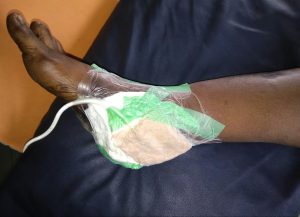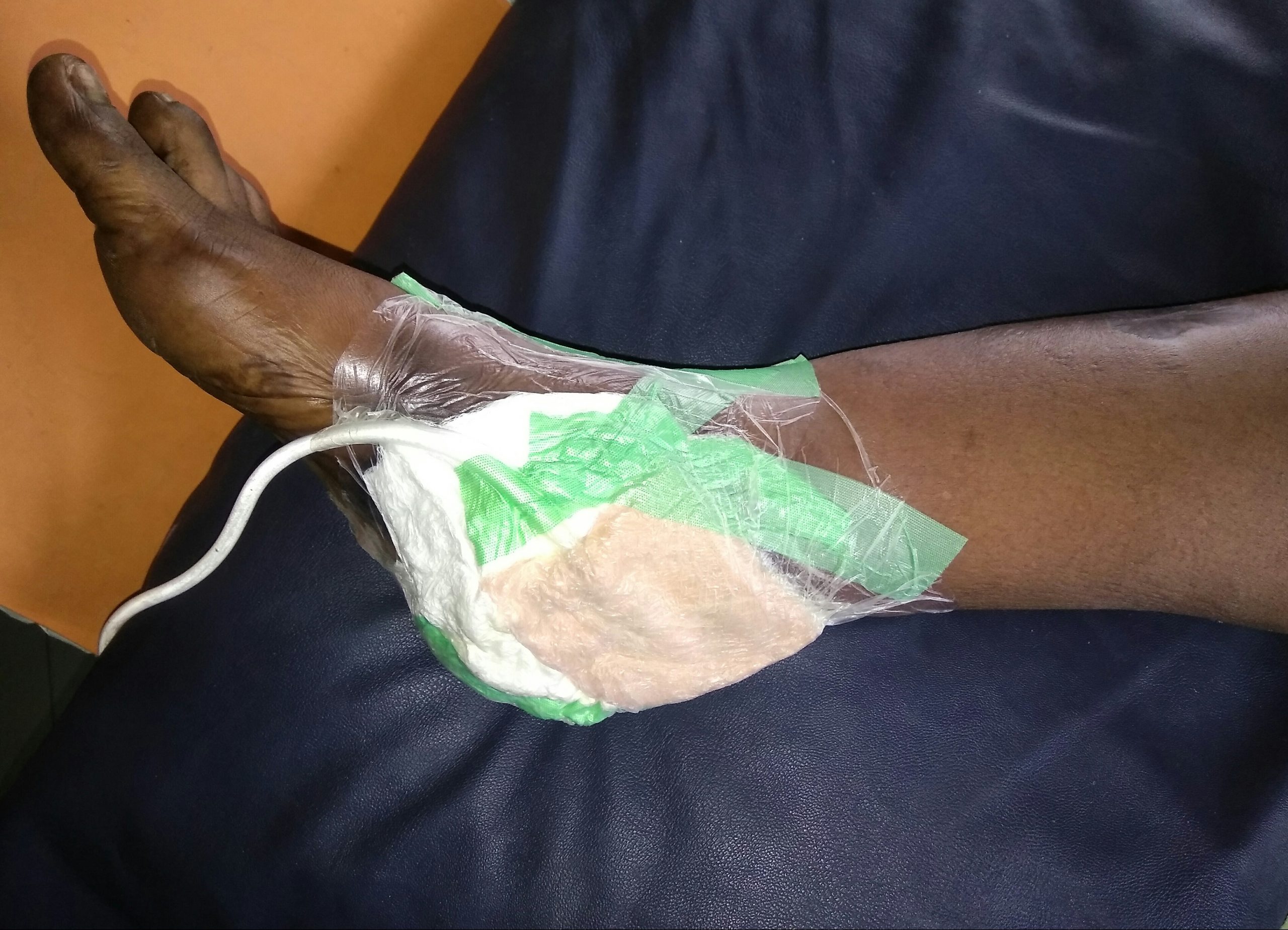Wound Care: A Comprehensive Article on Negative Pressure Wound Therapy(NPWT).
Outline:
➡️Introduction
➡️Historical perspective
➡️Relevance to plastic surgery
➡️Components
➡️Science/Mode of action/Effects
➡️Indications/Applications
➡️Contraindications
➡️Complications
➡️Adaptation/modifications
➡️Regional challenges
➡️Conclusion
Introduction
Negative pressure wound therapy (NPWT) is a topical method used to promote healing in acute and chronic wounds by administering negative pressure to the wound bed. Its is also called vacuum assisted wound closure or topical pressure therapy.
It is one of the adjuncts to wound healing and has made significant impact on wound care. It is very useful in the management of complex wounds (wounds that cannot be repaired by simple methods such as direct closure, healing by secondary intention or skin graft thus requiring resurfacing by more sophisticated surgical procedures). It is very useful in wound bed preparation including control of bioburden, reduction of exudates, promotion of granulation tissue etc.
Historical perspectives
It has been documented in Greek history in 400BC. Mirazimov a Russian surgeon in 1966 reported the use of negative pressure to improve wound bed preparation prior to STSG. Daydov in 1980s and 1990s published case series of infected wounds treated with negative pressure.
In Germany, Fleishmann et al in 1993, reported the use of negative pressure to for open fractures, osteomyelitis and pressure ulcers.
Argenta and Morykwas in 1997 were the first to publish an experimental and clinical paper on NPWT in English Language. Their study was both on pigs and then 300 patients with complex wounds. They reported increased blood flow, decreased bacteria count, development of healthy granulation tissues control of exudates etc. They elucidated in details the mechanism of action of NPWT.
The original brand of the device was produced by KCI and called VAC (R).
Relevance of NPWT to plastic surgery
➡️It has increased the armamentarium available to the plastic surgeon especially in the management of complex wounds.
➡️It is a reliable tool in the treatment of complex wounds i.e. it can turn a complex wound needing a technically demanding reconstruction to a wound amenable to repair by simple techniques.
➡️It has altered the reconstructive ladder because it can fit into any stage.
Components
It comprises four parts-
1. A filler porous material/sponge: This is placed on the wound. It may be a gauze, polyurethane foam or polyvinyl Alcohol foam.Gauze gives minimum micro deformation but good drainage. It is best indicated in superficial wounds. It is affordable. However, it adheres to the wound and therefore painful during removal.
Polyurethane foam (black foam) is available in different sizes and designs and can adapt to the contour of deep and regular shaped wounds. It has large pores of 400-600 micrometer and hydrophobic. It is effective in fluid drainage.
Polyvinyl alcohol foam (white foam) is hydrophilic, has smaller pores of 60-270 microns. It is pre-moisturized with water and hence less adherent to wound surface then others. Its more dense and restricts in-growth of granulation tissues. Dressing change is less painful. However it requires higher pressure to be effective.
2. Semi-permeable dressing – This helps to isolate the wound environment and allow the vacuum system to transmit sub atmospheric pressures to the wound surface.
3. Connecting tube
4. A vacuum system with a collection canister. It exerts the negative pressure on the wound. Pressures of -75mmHg to -125Hg are commonly used.
Science/ mode of action/effects
Negative pressure wound therapy acts by four mechanisms. These are –
1. Wound deformation – this includes macro deformation and micro deformation.
Macro deformation (macro strain) refers to the centripetal wound contraction induced by NPWT which counteracts tissue distraction forces. This results in microscopic decrease in the wound dimension, adequate contact between the wound bed and the wound dressing. Maximal wound contraction occurs at -75mmHg.
Micro deformation (micro strain) is the mechanical stretch that occurs at the tissue-foam interface where tissue is drawn into the pores of the foam leading to proliferative response at the cellular level. This is thought to be due to mechano-transduction. Micro deformation induces myc, c-jun, Bcl2 genes which causes tissues proliferation.
There is also increased levels of transformin growth factor beta (TGF-B), platelet derived growth factor alpha and beta ( PDGF-a & PDGF-b). This mechanism explains its use post split thickness skin graft as it makes the ulcer bed to adhere firmly to the grafted skin.
2. Fluid clearance – Chronic wounds tends to be oedematous. Oedema causes decrease in elasticity and capacity of the tissues to be mobilized thereby preventing approximation of wound edges, impedes the ability of the cells to stretch and generate tension necessary to proliferate. It also compresses terminal vessels and capillaries. Fluid clearance therefore, enables approximation of the wound edges, improves blood flow by decompressing the capillaries, removes the matrix metallo-proteinases and acute phase proteins and restores a more physiologic environment.
3. Improved blood flow – This results from oedema clearance and decompression of the capillaries within the wound. NPWT induces angiogenesis by inducing the production of vascular endothelial growth factor alpha (VEGF-a).

4. Reduction of bacteria load – This is achieved by removing exudates and hence decrease bio-burden, improved blood flow brings immune cells to the wound and improves the delivery of systemic antibiotics to the wound, up-regulation of interleukin-8 (IL-8)
The therapy can be continuous or intermittent. Intermittent therapy has been found to produce granulation tissues faster. A minimum of 8-hour therapy in a 24 hour therapy is needed to produce a desirable effect. Dressing change can be done every 4 to 7 days.
Indications/Applications in different specialties of Surgery
Plastic surgery
– treatment of chronic wounds
– treatment of acute wounds
– following flap surgery
– following split thickness skin grafting
– for diabetic foot ulcers
– pressure ulcers
– for fasciotomy wounds
Orthopaedic surgery
-For open fractures
-following closure of wounds on the anterior of the tibia
General surgery
-For abdominal wound dehiscence
Cardiothoracic surgery
-for sternotomy wounds
Contraindications
1. Wounds with necrotic tissue/eschar
2. Malignant bed
3. Unexplored fistula
4. Exposed blood vessels
5. Exposed nerves
6. Exposed anastomotic sites
7. Exposed viscera
8. Presence of active infection
9. Untreated osteomyelitis
10. Active bleeding from the wounds
Complications
➡️Bleeding
➡️Infection
➡️Pain
➡️Foam retention
➡️Viscera rupture
Adaptations/Modifications
➡️Silver coated foams to enhance antimicrobial effect
➡️Combination of classic polyurethane foam and silver dressing
➡️Normal saline instillation to enhance bacteria clearance and reduction of odour
➡️Safety check features such as alarms when there is low pressure, leakage or high pressure.
➡️Use of improvised equipments such as suction machine +opsite/clean film + feeding tube + baby sponge
➡️Ambulatory negative pressure wound therapy – Small sized devices have been developed and are in use for the administration of negative pressure wound therapy in ambulant patients.
Thus, they can be used on out-patient basis thereby removing the need for admission/in-patient care and reducing the cost of treatment.
Regional challenges
➡️Lack of ideal facilities especially the VAC machine due to high cost
➡️Poor electricity
➡️Poverty
Conclusion
Negative pressure wound therapy is a vital tool in the hands of a plastic surgeon. It often provides an easier way for managing complex wounds.
Credit:
Dr Fidelis Ozoba. FWACS
Consultant Plastic Surgeon





















